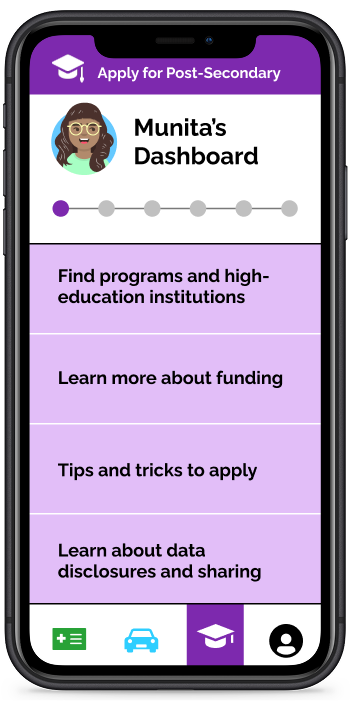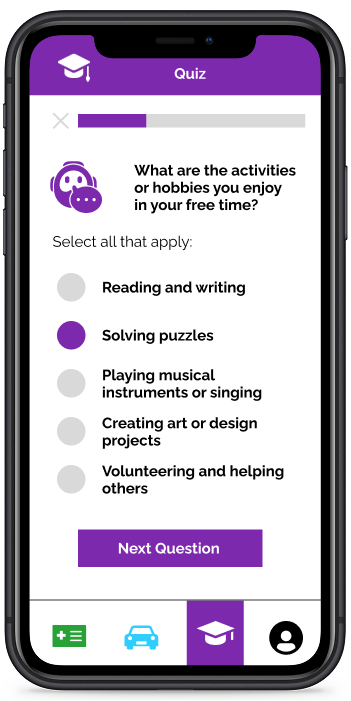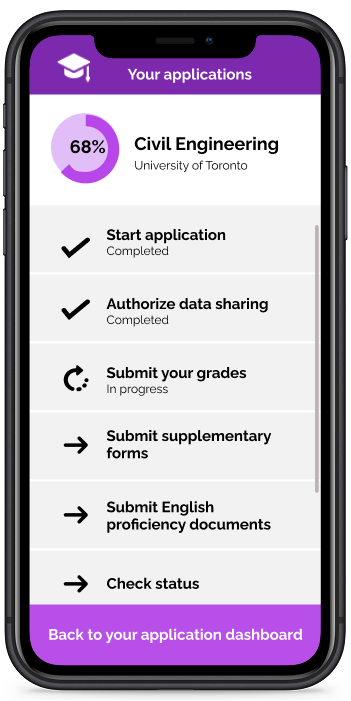As part of its efforts to innovate the service delivery model, ServiceOntario was interested in exploring the potential of bundled services offered during pivotal life events. This research combined the development of a deeper understanding of this best in class government services approach, with a better understanding of youth between 16-18 years old during the period when they transition to adulthood. The results of this research expected to support ServiceOntario in developing more inclusive service delivery strategies, services and channels, including ongoing operational and continuous improvement efforts.
Disclosure: This case study is based on my work with Groundswell Projects and our provincial government client and has been adapted to comply with confidentiality agreements. Specific details have been omitted or generalized.
Mapping services youth interact with
The objectives of this project included mapping the current state of youth aged 16-18 entering into Adulthood service ecosystem, documenting the current understanding of pain points from a service delivery perspective for the services accessed by youth, and informing the development of questions to explore with customers (youth and their navigators) through primary research.
The method involved conducting two virtual workshops with frontline staff responsible for product or service delivery and monitoring, including at the contact centre, in-person, and online. These workshops utilized participatory mapping of the service ecosystem, customer journeys, touchpoints, and pain points for three life event service clusters, using a digital whiteboard.

Ecosystem of services accessed by youth as seen by different ministries, this ecosystem was refined and validated in interviews
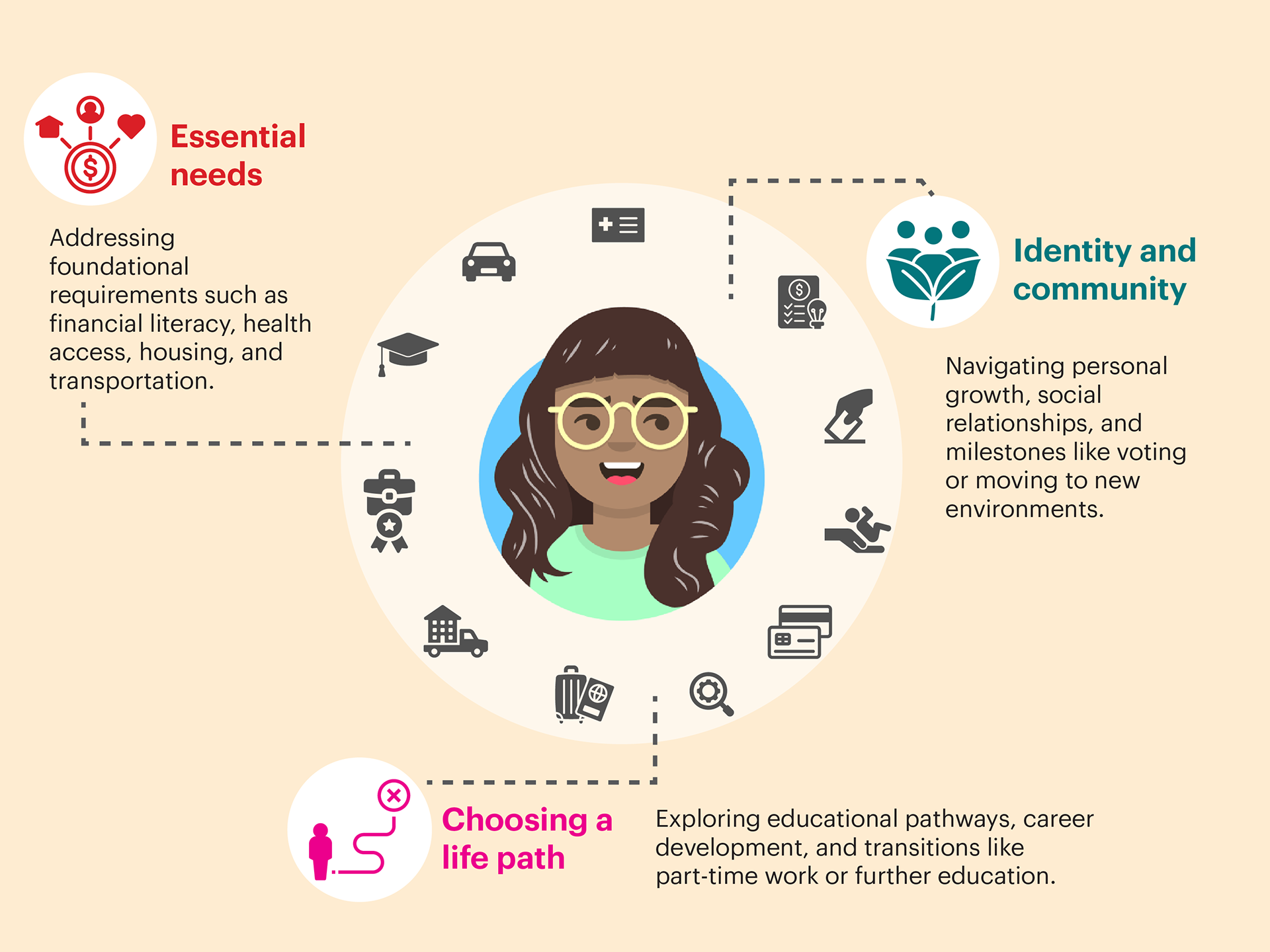
A refined representation of the youth ecosystem, shaped by insights from stakeholder and youth interviews, highlighting three overarching areas.
Deep dive into user research
We conducted semi-structured interviews with four segments of youth. Our goals were to understand their mindsets about government and its services within the context of their cultural practices, beliefs, and experiences at this unique time in their lives transitioning from childhood to adulthood. These interviews involved a set of open-ended questions, active listening, and observation, which allowed us to gain insights into their social phenomena and cultural contexts. In addition to the interview, we socialized the conceptual prototypes and learned from their reactions.
Conceptual Prototyping
The world class examples of government experience through bundled life event services that surfaced in desk research, combined with the hypothesis of the ecosystem that youth are part of, were used to build prototypes of what ServiceOntario might offer youth as they transition into adulthood.
We visualized a range of potential solutions that researchers presented to participants during their interviews. The prototypes were created in the form of a fictional story and illustrative storyboards, depicting potential future bundled service experiences for the three service clusters of obtaining a photo health card, acquiring a driver's licence, and applying for post-secondary education.
This method of interacting with youth was by far the most generative and fruitful, over the wireframes presented to youth in the second version of the prototype. With iterated versions of the conceptual prototypes, based on both desk research and semi-structured interviews, we led two workshops with six diverse youth to test how the refined service bundle experiences would land given their recent experiences going through the journeys we were solving for in new and novel ways.

Conceptual prototype for features to get a first photo ID

Conceptual prototype for features to obtain your first driving license

Conceptual prototype to showcase the features and journey for applying to post-secondary education
Making Sense of Research
The interviews and conceptual prototypes we tested provided a deeper understanding of youth, revealing three overarching themes that informed our strategic service design recommendations. These insights, combined with a deep understanding of our users, enabled us to develop personas, create a blueprint for the future of youth-oriented services, and recommend key features to consider when designing digital products for youth transitioning into adulthood.
Personas
To develop a deeper understanding of our users' goals, needs, experiences, and behaviours, we created personas for each user segment. These personas were informed by user interviews and prior research, evolving throughout the project as we gathered more data. They helped our client visualize the experiences we documented and provided a foundation for generating user stories that guided feature ideation for our preliminary prototype.
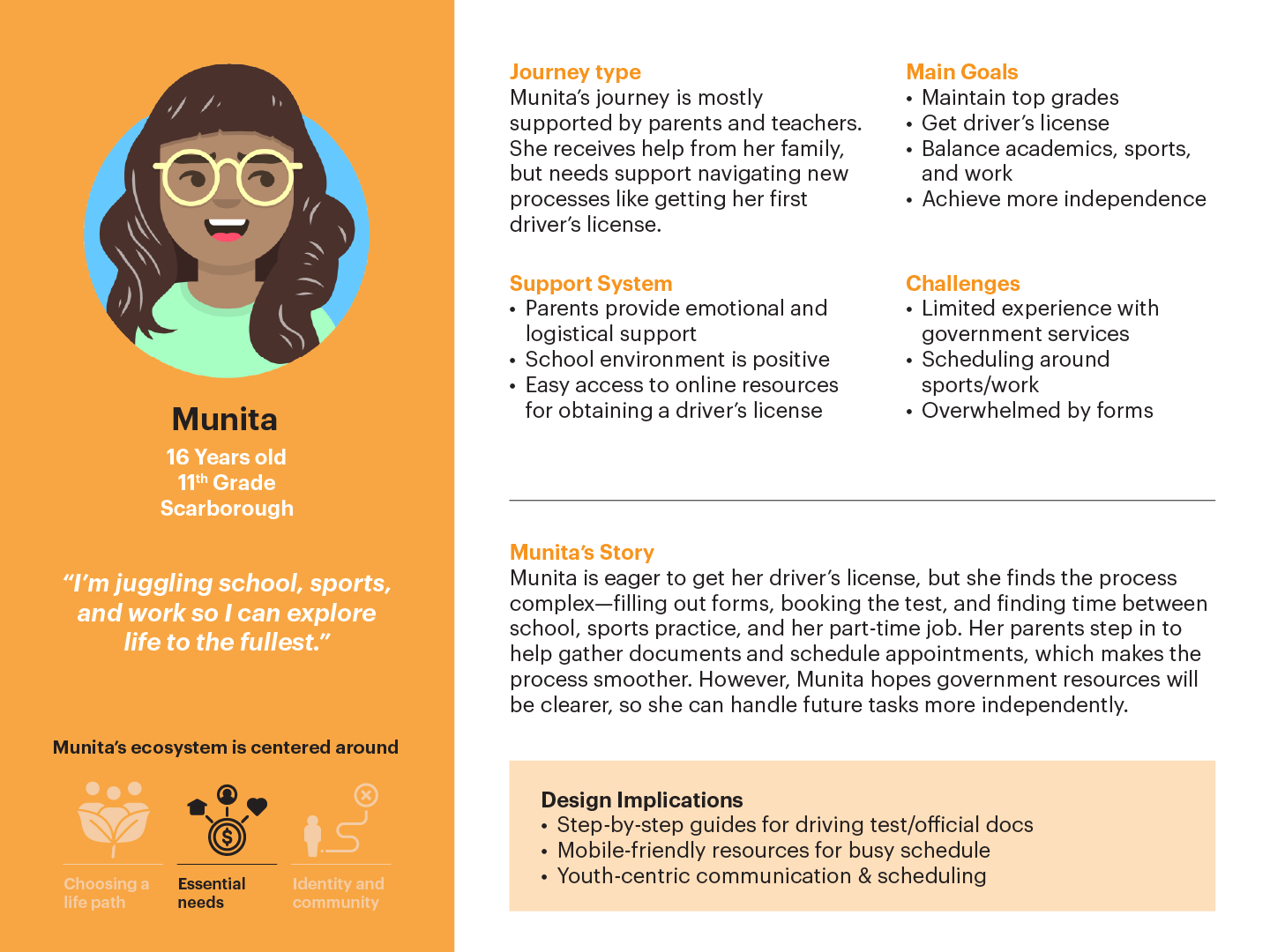


Each persona captured key aspects of the user's journey—whether it was supported or unsupported—along with their goals, challenges, and design implications. Additionally, we highlighted the most influential parts of their ecosystem and included a user story to contextualize both their current and future state journeys.
Current journey of Munita, who wants to apply for post-secondary education
Future State and Recommendations
The insights compiled from research revealed the need for a bundled service that takes into account three service design principles. First is to create positive connections with youth, this means that is pivotal to foster genuine and positive relationships to encourage youth to actively shape their communities. Second, youth needs to be empowered towards independence, this will result in increased confidence throughout an age where it seems like youth goes through overwhelming life decisions. Finally, adapting the style of communication to what youth engage the most can help them to feel more connected, guided and genuinely supported.
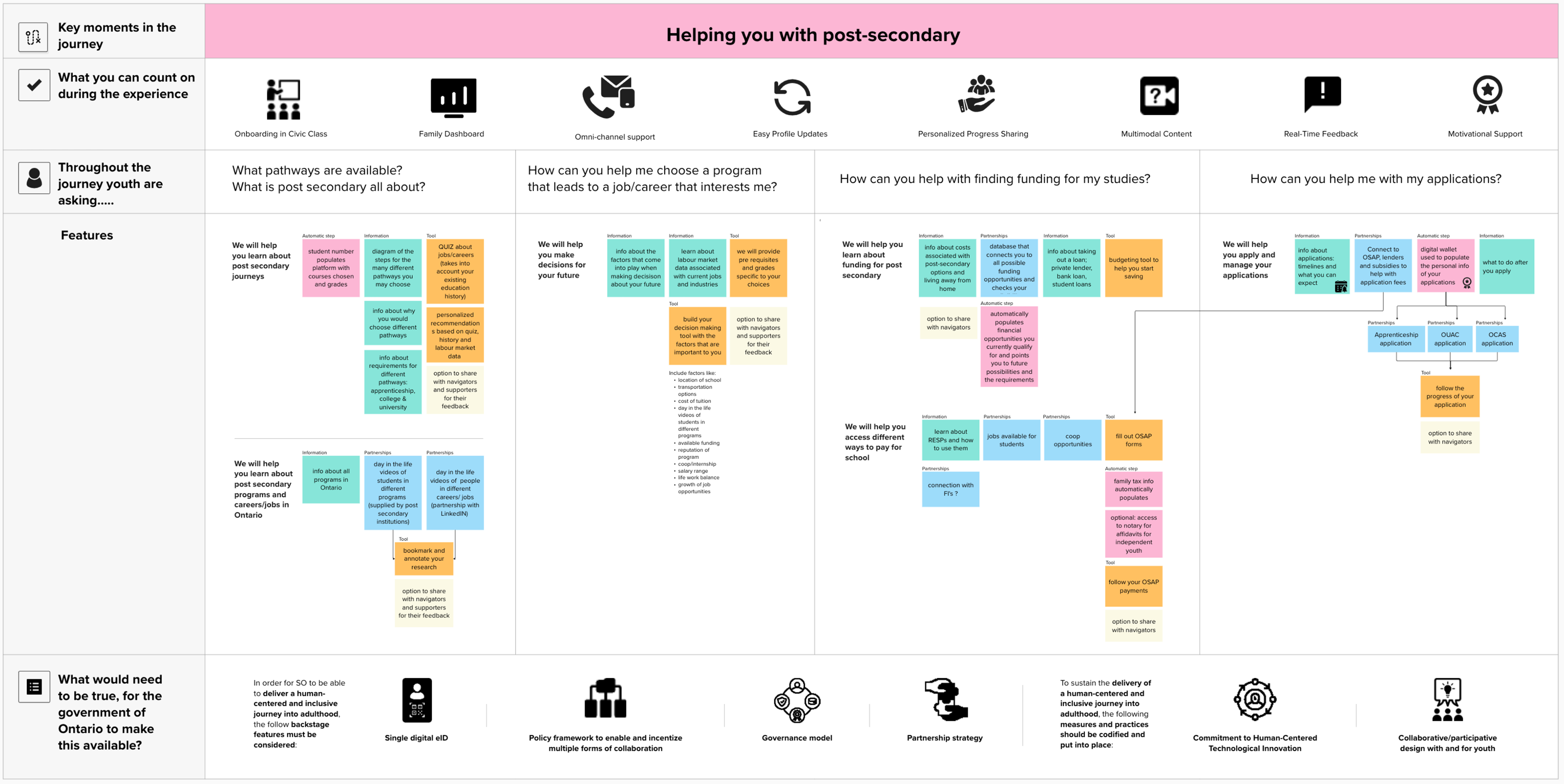
Above: Future state recommendations sample based on insights from the second and final round of workshops conducted with youth. We translated their feedback into these dashboards, which were included in our final recommendation reports.
Last thoughts
Given the timeframe and scope of this project, we had limited opportunities to develop wireframes. This is an area I would have loved to explore further, as there are many nuanced but pivotal moments that could significantly improve services for youth. In particular, designing a planner to guide students through high school could help lay the groundwork for more confident and informed decision-making.
Below are a few of the wireframes I created in Figma to explore how an app might support students throughout their university application process.

